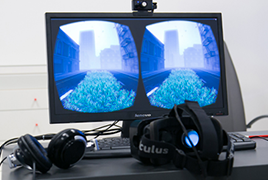Purpose: Amblyopia is one of the most common childhood disease. The average prevalence of amblyopia in children is estimated at 2-5 %. It arises during the child development until the age of six, if not treated then, it persist throught adulthood. The aim of our work is to retrospectively analyze the results of treatment of anisometropic amblyopia using dichoptical training in virtual reality in adult amblyopic patients.
Materials and Methods: Our group consisted of 84 amblyopic patients with anisometropic amblyopia with an average age of 33.8 ± 9.4 years. Patients played a video game twice a week in the Oculus Rift 3D virtual reality. Together they completed 8 visual trainings, with one training lasting 60 minutes. Before and after the training we evaluated the best corrected visual acuity (BCVA).
Discussion: Throughout the group, we observed an improvement of 0.1 BCVA from 0.48 to 0.58 Sloan table (p <0.05). 17% of patients before training and 31% after visual training reached BCVA better or equal to 0.9. The overall response rate was 56% in adult patients (n = 47). Conclusion: Our results suggest that a certain degree of residual neuro-plasticity in the visual cortex can be revealed in the adult brain, thereby improve visual acuity in adult amblyopic patients.

